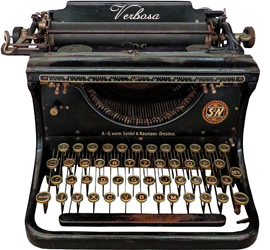The concept of engine run is introduced through a simple metaphor, using
engine levels
to describe high, low, and just right states of alertness and arousal, helping children understand self-regulation skills effectively always.
Understanding the Engine Metaphor
The engine metaphor is a simple yet effective way to describe the different states of alertness and arousal, helping children to understand and manage their emotions and behaviors. This metaphor is used to explain the concept of engine levels, which include high, low, and just right states. The engine metaphor is based on the idea that our bodies are like engines, and just like cars, we need to be in the right gear to function properly. By using this metaphor, children can easily understand the concept of self-regulation and how to manage their emotions and behaviors. The engine metaphor is a key component of the How Does Your Engine Run program, which is designed to help children develop self-regulation skills and improve their overall well-being. The program uses a variety of strategies and techniques to help children understand and manage their engine levels, including role-playing, visualization, and deep breathing exercises.
The Alert Program and Engine Strategy
The Alert Program uses engine strategy to help children regulate alertness and arousal levels effectively always with simple techniques and methods online.
Role Modeling and Teaching Methods
Role modeling is a key teaching method in the Alert Program, where adults share their own experiences and strategies for self-regulation. This approach helps children understand and develop their own self-regulation skills. By talking about their own engine levels, adults can model how to recognize and manage different states of alertness and arousal. For example, an adult can say, “I’m feeling tired, my engine is running low, so I’m going to take a break.” This kind of role modeling can be very effective in teaching children about self-regulation. The Alert Program provides a framework for adults to use role modeling and other teaching methods to help children develop self-regulation skills. By using these methods, adults can help children learn to recognize and manage their own engine levels, leading to better self-regulation and more effective learning. Effective role modeling requires awareness and consistency;

Engine Levels and Self-Regulation
Engine levels describe high, low, and just right states of alertness, helping children understand and manage their self-regulation skills effectively always with simple strategies.
High, Low, and Just Right Engine Speeds
The concept of engine speeds is used to describe the different levels of alertness, with high, low, and just right speeds. This metaphor helps children understand and identify their own energy levels and arousal states. The high engine speed is characterized by feelings of excitement, hyperactivity, and restlessness, while the low engine speed is marked by lethargy, fatigue, and disengagement. The just right engine speed, on the other hand, is associated with feelings of calmness, focus, and engagement. By recognizing and labeling these different engine speeds, children can learn to self-regulate their behaviors and develop strategies to achieve a just right state. This awareness is essential for children to develop emotional regulation skills and to manage their behaviors in different situations. Effective use of engine speeds can lead to improved self-awareness and self-regulation.

Implementing the Alert Program
Program implementation involves teaching children to recognize and manage their alertness levels using engine strategies to support self-regulation and emotional awareness always effectively every day.
Teaching Children to Monitor and Maintain Alertness
Teaching children to monitor and maintain alertness is a crucial aspect of the Alert Program, which involves helping them recognize and manage their engine levels. This can be achieved by using simple and engaging language to describe different states of alertness, such as high, low, and just right. By using relatable examples and anecdotes, children can begin to understand how their engine levels impact their behavior and emotions. The program also emphasizes the importance of self-regulation strategies, such as deep breathing, stretching, and visualization, to help children manage their alertness levels. Additionally, role-modeling and open communication are essential in teaching children to monitor and maintain alertness, as they learn from observing and interacting with others. By providing a supportive and non-judgmental environment, children can feel comfortable exploring and discussing their engine levels, leading to improved self-awareness and self-regulation skills. Effective teaching methods and strategies are necessary to help children develop these skills.

Using the How Does Your Engine Run Methodology
Methodology helps children identify and manage their engine levels using simple strategies and techniques effectively always with support and guidance from teachers and parents every day.
Encouraging Self-Regulation and Awareness
The How Does Your Engine Run methodology encourages self-regulation and awareness in children by teaching them to recognize and manage their engine levels. This is achieved through a variety of strategies and techniques, including deep breathing, stretching, and physical activity. By using these strategies, children can learn to self-regulate their behaviors and develop greater awareness of their emotional and physical states. The methodology also emphasizes the importance of role modeling and teaching children to communicate their needs and feelings effectively. Additionally, the program provides a framework for children to develop self-awareness and self-regulation skills, which are essential for academic and social success.

Applying Engine Strategies in Daily Life
Using engine strategies in daily life is essential for self-regulation, helping individuals manage emotions and behaviors effectively always with simple techniques like deep breathing.
Sharing Experiences and Supporting Children’s Self-Regulation
Sharing experiences and supporting children’s self-regulation is crucial for their emotional and behavioral development, and can be achieved through open communication and role modeling.
By talking about their own engine levels and strategies, adults can help children understand and manage their emotions, leading to better self-regulation skills.
Using the engine metaphor, adults can share their own experiences of high, low, and just right engine levels, and how they use different strategies to manage their emotions and behaviors.
This can help children develop a better understanding of their own emotions and behaviors, and learn how to self-regulate effectively, leading to improved relationships and academic performance.
Additionally, sharing experiences and supporting children’s self-regulation can help create a supportive and nurturing environment, where children feel comfortable discussing their emotions and behaviors.
